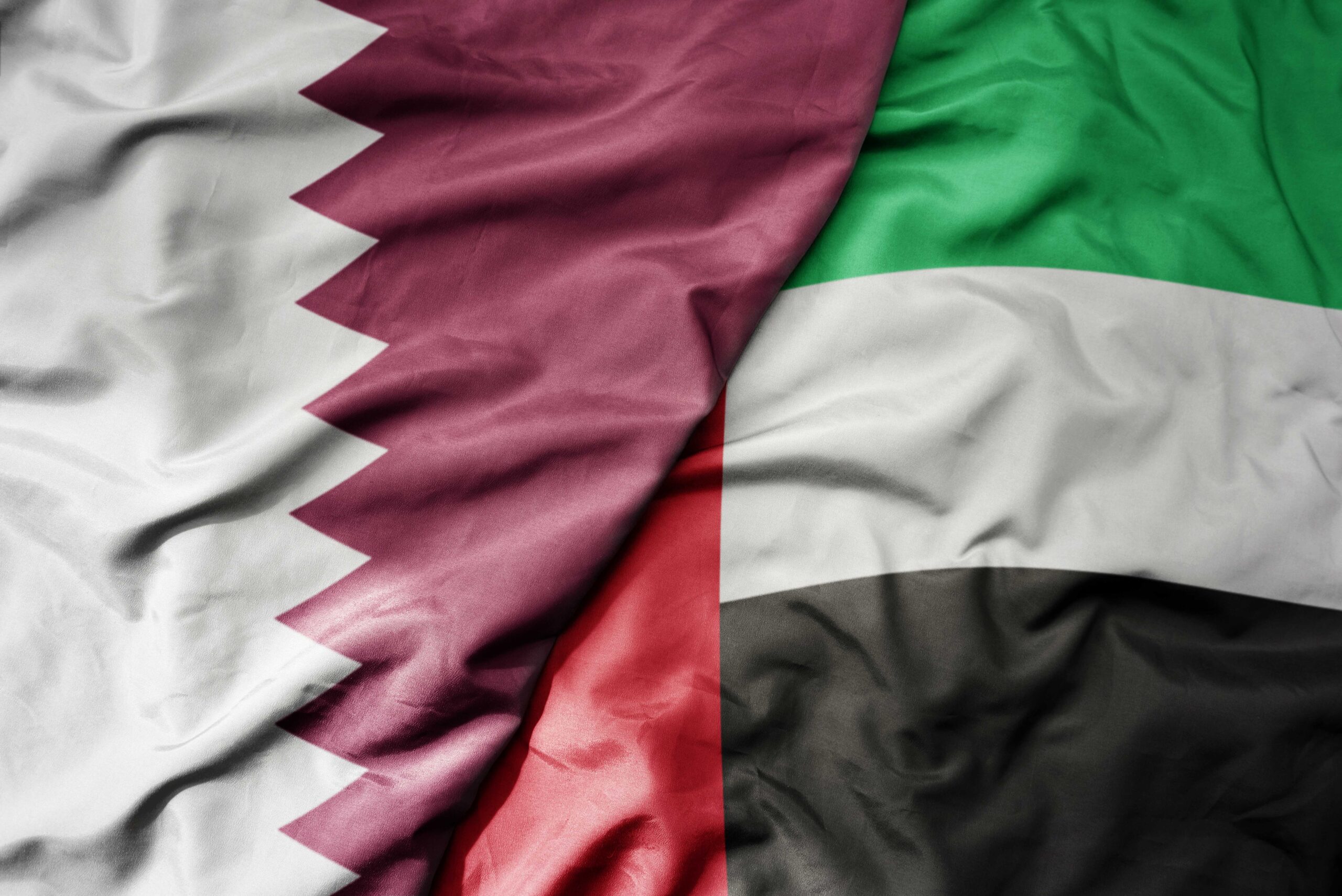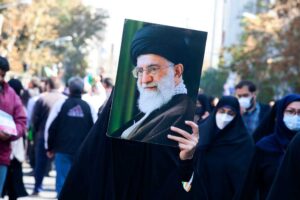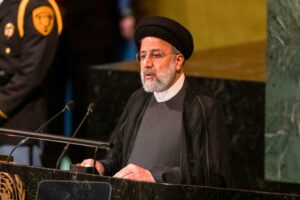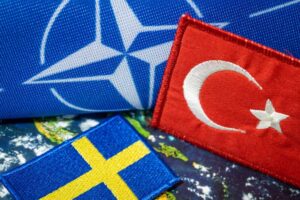In recent years, the United Arab Emirates (UAE) has been on a diplomatic spree, re-normalising relations with a host of countries in the region, including Syria, Iran and Turkey, as well as formalising ties with Israel. The UAE’s reconciliation with Qatar following the Gulf Cooperation Council’s (GCC) historic al-Ula summit of January 2021 is illustrative of shifts toward greater pragmatism in Abu Dhabi’s foreign policy agenda. As part of Emirati efforts to dial down tensions with competitors, rivals and adversaries, the UAE has sought to contain and manage—as opposed to heighten—the friction that has built up between Abu Dhabi and Doha since the 1990s, particularly in the post-2011 period.
Questions about the role of political Islam and pluralism in the Arab world have been at the heart of tensions between the UAE and Qatar. Abu Dhabi’s commitment to an authoritarian model and fierce opposition to the Muslim Brotherhood has led it to perceive various aspects of Qatari foreign policy as a threat to the UAE and what Abu Dhabi sees as ‘moderation’ and ‘secularism’ in the region. Such friction was a major driver of the GCC crises of 2014 and 2017–21.
When a handful of Arab-Muslim nations joined together to apply pressure on Qatar in May/June 2017, Abu Dhabi was the main agent behind that campaign against Doha. The problems between Qatar and the UAE were ideological in nature, whereas tensions between Doha and Riyadh were more strategic. Although the Saudi government has recognised the Muslim Brotherhood as a terrorist organisation since 2014 and had problems with the Islamist movement since many years prior, Riyadh has been far less rigid than Abu Dhabi in opposing political Islam.[i]
Riyadh—far more than Abu Dhabi—was interested in re-normalising relations with Doha and putting the GCC crisis behind the Gulf Arab monarchies.
These slightly different perspectives of the alleged Qatari threat help explain why, by late 2020 and early 2021, Riyadh—far more than Abu Dhabi—was interested in re-normalising relations with Doha and putting the GCC crisis behind the Gulf Arab monarchies. Put simply, Saudi Arabia was the main agent behind the al-Ula summit that resulted in the blockade of Qatar being lifted. Beginning in the second half of 2019, some analysts speculated that the GCC’s Qatar rift could emerge as a contentious issue pushing Saudi Arabia and the UAE in different directions—with Riyadh favouring, and Abu Dhabi opposing, reconciliation with Doha.[ii]
As Dr. Hussein Ibish, a senior resident scholar at the Arab Gulf States Institute in Washington, wrote six months after the siege of Qatar ended, “Left to its own devices, the UAE may well have preferred to continue the boycott, which it largely viewed in ideological terms seeing Qatar as a key member of Turkey’s fledgling regional network.”[iii]
In fact, after the Saudis and Qataris began reconciling in late 2020, Abu Dhabi viewed the Riyadh-Doha rapprochement as a threat to the UAE. That Saudi officials did not consult their counterparts in Abu Dhabi in relation to their plans for re-normalising relations with Qatar was particularly unsettling to the Emirati leadership.
However, the UAE has come on board with Gulf reconciliation, albeit to a lesser extent than Saudi Arabia. Ultimately, Abu Dhabi came to terms with the reality of reconciliation between Riyadh and Doha. The UAE’s leadership realised that, without Saudi Arabia being a part of the anti-Qatar camp, the collective efforts aimed at pressuring Doha into making fundamental changes in line with Riyadh and Abu Dhabi’s visions for the region would prove futile.
With the Saudi-Qatari border reopening, Qatar’s relative regional isolation would essentially end, and a blockade being implemented solely by the UAE, Bahrain and Egypt would prove ineffective. Within this context, officials in Abu Dhabi saw that the Gulf region’s geopolitical order was shifting and feared that their anti-Qatar policy obstinance would increase the risk of Abu Dhabi being sidelined. In general, the UAE has repeatedly demonstrated its ability to adapt to new regional and international circumstances quickly and shrewdly. The thaw in Abu Dhabi and Doha’s relationship throughout 2021/22 highlights this point.
Saudi Arabia and Egypt have improved their relations with Qatar the most.
The four main Arab states which blockaded Qatar from 2017 until 2021 have reconciled with Doha to different degrees throughout the post-al-Ula period. Saudi Arabia and Egypt have improved their relations with Qatar the most, transforming their relationships from ones of distrust, deep suspicion and hostility toward ones of cooperation. Although tensions do linger between Cairo and Riyadh on one side and Doha on the other, there is now a fair amount of stability in these two bilateral relationships.
By early 2021, Egypt’s government began seeing Qatar, Al Jazeera and the Islamists who had previously received support from Doha as less of a threat compared to previous points during the post-2011 period. Egypt has also been eager to lure Qatari investment while President Abdel Fattah el-Sisi saw the need to send a message to the incoming Biden administration about Cairo’s willingness to play a more reconciliatory role as a regional ‘peacemaker.’ All these factors have helped explain why Egypt moved quickly to re-normalise relations with Doha in the immediate aftermath of the al-Ula summit despite the viciousness of the Sisi regime’s anti-Qatari rhetoric amid the blockade.
Hopes that Qatari diplomacy could aid Cairo in relation to both the Grand Ethiopian Renaissance Dam (GERD) controversy and the situation in Libya also gave Egypt reason to see the benefits of rapprochement with Doha outweighing any perceived costs of re-normalisation. Considering the billions that Qatar has recently put into the Egyptian economy, officials in Cairo are pleased to see the two countries let bygones be bygones, especially mindful of how the Ukrainian crisis has created immense challenges for Egypt from food security and other standpoints.
Saudi Arabia, like Egypt, saw the blockade as ineffective and useless by the time Riyadh determined that lifting it would serve the Kingdom’s interests. Extremely worried about Tehran’s conduct in the region, the Saudis have wanted to see the GCC become a more functional institution, which was unrealistic amid the 2017-2021 crisis. By January 2021, Saudi Crown Prince Mohammed bin Salman was preparing for the Biden presidency, and he had an incentive to make a relatively low-cost move that could earn him some goodwill with lawmakers in Washington who saw this Arabian feud undermine U.S. interests in the Gulf. Additionally, the blockade of Qatar had pushed Doha closer to Tehran and continuing it would come at the expense of Saudi economic interests in relation to its neighbour.
The UAE has not moved as fast as Saudi Arabia or Egypt in terms of re-normalising relations with Qatar. Yet, the Emirati-Qatari rapprochement began picking up speed in August 2021, seven months after the al-Ula summit. Qatari Emir Sheikh Tamim bin Hamad Al Thani’s description of Sheikh Khalifa bin Zayed Al Nahyan, the late President of the UAE, as a “greater leader who was wise and moderate” and “our dear brother” at the time of his death and his attendance at Sheikh Khalifa’s funeral in Abu Dhabi underscored how bilateral relations had warmed since the al-Ula summit.[iv], [v]
During times of heightened instability in the Middle East and West Asia, Gulf Arab monarchies have been relatively more united within the GCC.
A few factors have been important to Abu Dhabi’s shifting approach toward Qatar since January 2021. First, the Taliban retaking control of Afghanistan has influenced reconciliation in the GCC throughout the post-al-Ula period. In general, during times of heightened instability in the Middle East and West Asia, Gulf Arab monarchies have been relatively more united within the GCC. In contrast, times of greater stability in the neighbourhood have generally exposed the differences between the sub-regional institution’s member-states. For example, many experts contend that the resolution of the 2014 GCC crisis was related to the meteoric rise of Islamic State in Iraq and Syria earlier that year while the second GCC crisis erupted after that extremist group had been greatly weakened in the Levant. Going back earlier, the GCC was formed in the immediate aftermath of Iran’s 1979 Islamic Revolution and the Soviet Union’s invasion of Afghanistan that same year—two developments in the Islamic world that terrified the conservative, Western-backed monarchies on the Arabian Peninsula.
It was hardly a coincidence that on 26 August 2021, only eleven days after the Taliban retook control of Afghanistan, Sheikh Tahnoon bin Zayed, the UAE’s National Security Advisor, met with Qatar’s Emir in Doha.[vi] Then, only two days later, Sheikh Mohammed bin Rashid, the ruler of Dubai, met with the Qatari monarch at the Baghdad Summit.[vii]
Second, the global Covid-19 pandemic had a devastating impact on economies in the Middle East and beyond. Countries such as the UAE suffered from the effects of Covid-19 and thus, rapprochements have been one way for the Emiratis to pursue economic gains in the post-Covid recovery period. Essentially, the pandemic made it more costly for Abu Dhabi to maintain such a confrontational and hawkish foreign policy. At this stage, the Emiratis are planning to benefit economically from the FIFA World Cup which Qatar will host later this year, largely due to all the fans who will fly to Doha via the UAE and stay in Abu Dhabi and Dubai’s hotels before, after, and during the global event. Of course, this would not be possible had the Emiratis continued blockading Qatar.
Third, there is the factor of Biden’s presidency. Like other GCC states, the UAE has become increasingly nervous about remaining so dependent on the United States as a security guarantor. The general view from Abu Dhabi and a handful of other Arab capitals is that Washington is gradually pulling out of the Middle East. Whether this is a reality, or a false perception, is up for debate. Nevertheless, this is how Emirati officials understand U.S. foreign policy vis-à-vis the region and such views are informing Abu Dhabi’s decisions.
Within this context, the UAE has been working to mend fences with various countries in the Middle East, including not only Qatar, but also Turkey and Iran. The rationale for this strategy is clear: if the US can’t be counted on to strongly back Abu Dhabi in a more confrontational approach to its regional adversaries, it is prudent for the UAE to pursue reconciliation and expand investment, trade and economic opportunities with these countries.
Following meetings between high-ranking Emirati and Qatari officials in late August 2021, additional exchanges have built on those initial meetings. On 17 September 2021, the UAE’s National Security Advisor, the Emir of Qatar, and the Saudi Crown Prince met at a location on Saudi Arabia’s Red Sea coast. According to a tweet published by the director of Mohammed bin Salman’s office, the three of them had a “cordial meeting.”[viii] On 22 June, the UAE’s National Security Advisor went back to Doha for his second meeting with the Emir of Qatar in the post-al-Ula period, where the two discussed bolstering bilateral relations.[ix]
Ultimately, the UAE and Qatar have made major progress in terms of reconciliation. Not long ago, many experts assumed that extremely high levels of tension would define bilateral relations for a long span of time and that the GCC’s internal feud would become an institutionalised part of the Gulf sub-region’s geopolitical order. Even at the time of the al-Ula summit, scores of analysts doubted that Abu Dhabi would reconcile with Doha.
Despite the progress, however, much work remains to overcome the two GCC states’ lingering suspicions of one another. Whilst Abu Dhabi and Doha have restored travel and trade links, the UAE has yet to appoint an ambassador to Qatar. If Abu Dhabi rectifies this, such a move would signal a stronger Emirati commitment to rapprochement with Qatar. At this juncture, it is unclear whether Abu Dhabi would do so. Most likely, more confidence building measures are needed before the UAE would take that step.
The situation in post-US Afghanistan will be critical to monitor in relation to Abu Dhabi-Doha relations.
In general, even though tensions between the UAE and Qatar have decreased drastically, significant levels of competition will continue to shape bilateral relations. The situation in post-US Afghanistan will be critical to monitor in relation to Abu Dhabi-Doha relations. Both Gulf Arab states have competed for influence in Taliban-ruled Afghanistan, with each seeking to present itself to Washington as the GCC state most capable of serving as a bridge between Taliban-ruled Afghanistan and the West. Thus, whilst the security threats which Afghanistan represents to all GCC states have served to advance Emirati-Qatari reconciliation, such elements of competition vis-à-vis the Afghan file may also fuel animosity down the line.
Looking ahead, the future of the UAE and Qatar’s relationship is uncertain. The process of mending bilateral ties will possibly further consolidate progress achieved on this front since the al-Ula summit. Yet, the 2017–21 GCC crisis has eroded trust between these two countries, and this will require more time to restore. Furthermore, with the root causes of ideological tension between Abu Dhabi and Doha being unresolved, there is reason to believe that major problems between the UAE and Qatar could re-emerge in the future. If Donald Trump or a similarly-minded Republican enters the Oval Office in January 2025, Abu Dhabi could feel emboldened to act against Doha again—a geopolitical risk that is not lost on Qatari officials.
Overall, the UAE decided to reconcile with Qatar because in 2021/22 the leadership in Abu Dhabi assessed that doing so would advance Emirati interests. There is no guarantee that in the future the UAE will not again determine that acting against Qatar would best serve its national interests. So, though the fallout of the previous crises has started to fade, the possibility of a third GCC crisis down the road must not be ruled out.
[i] “Saudi Arabia declares Muslim Brotherhood ‘terrorist group.’” BBC. 7 March 2014. https://www.bbc.com/news/world-middle-east-26487092.
[ii] Bianco, Cinzia. “Cracks in the Saudi-Emirati alliance?” European Council on Foreign Relations. 13 September 2019. https://ecfr.eu/article/commentary_cracks_in_the_saudi_emirati_alliance/.
[iii] Ibish, Hussein. “The UAE and Saudi Arabia: The Partnership Endures Despite Oil Dispute.” The Arab Gulf States Institute in Washington. 8 July 2021. https://agsiw.org/the-uae-and-saudi-arabia-the-partnership-endures-despite-oil-dispute/.
[iv] “Qatar’s Emir mourns ‘wise and moderate’ Sheikh Khalifa.” The National. 13 May 2022. https://www.thenationalnews.com/gulf-news/2022/05/13/qatars-emir-mourns-wise-and-moderate-sheikh-khalifa/.
[v] “Amir offers condolences to UAE President.” Qatar Tribune. 15 May 2022. https://www.qatar-tribune.com/article/9279/TopNews/Amir-offers-condolences-to-UAE-President.
[vi] “UAE’s Sheikh Tahnoun bin Zayed leads delegation to Qatar.” The National. 26 August 2021. https://www.thenationalnews.com/uae/2021/08/26/uaes-sheikh-tahnoun-bin-zayed-leads-delegation-to-qatar/.
[vii] Nasrallah, Tawfiq. “Mohammed bin Rashid, Qatar Emir meet on sidelines of Baghdad summit.” Gulf News. 28 August 2021. https://gulfnews.com/world/mena/mohammed-bin-rashid-qatar-emir-meet-on-sidelines-of-baghdad-summit-1.81867173.
[viii] “Saudi Crown Prince, Qatari emir and top UAE security official meet in Red Sea.” Al Arabiya English. 17 September 2021. https://english.alarabiya.net/News/gulf/2021/09/17/Saudi-Crown-Prince-Qatari-emir-and-top-UAE-security-official-meet-in-Red-Sea.
[ix] “UAE national security adviser meets Qatar’s emir in second visit.” Reuters. 28 June 2022. https://www.reuters.com/world/middle-east/uae-national-security-adviser-meets-qatars-emir-second-visit-2022-06-28/.

















